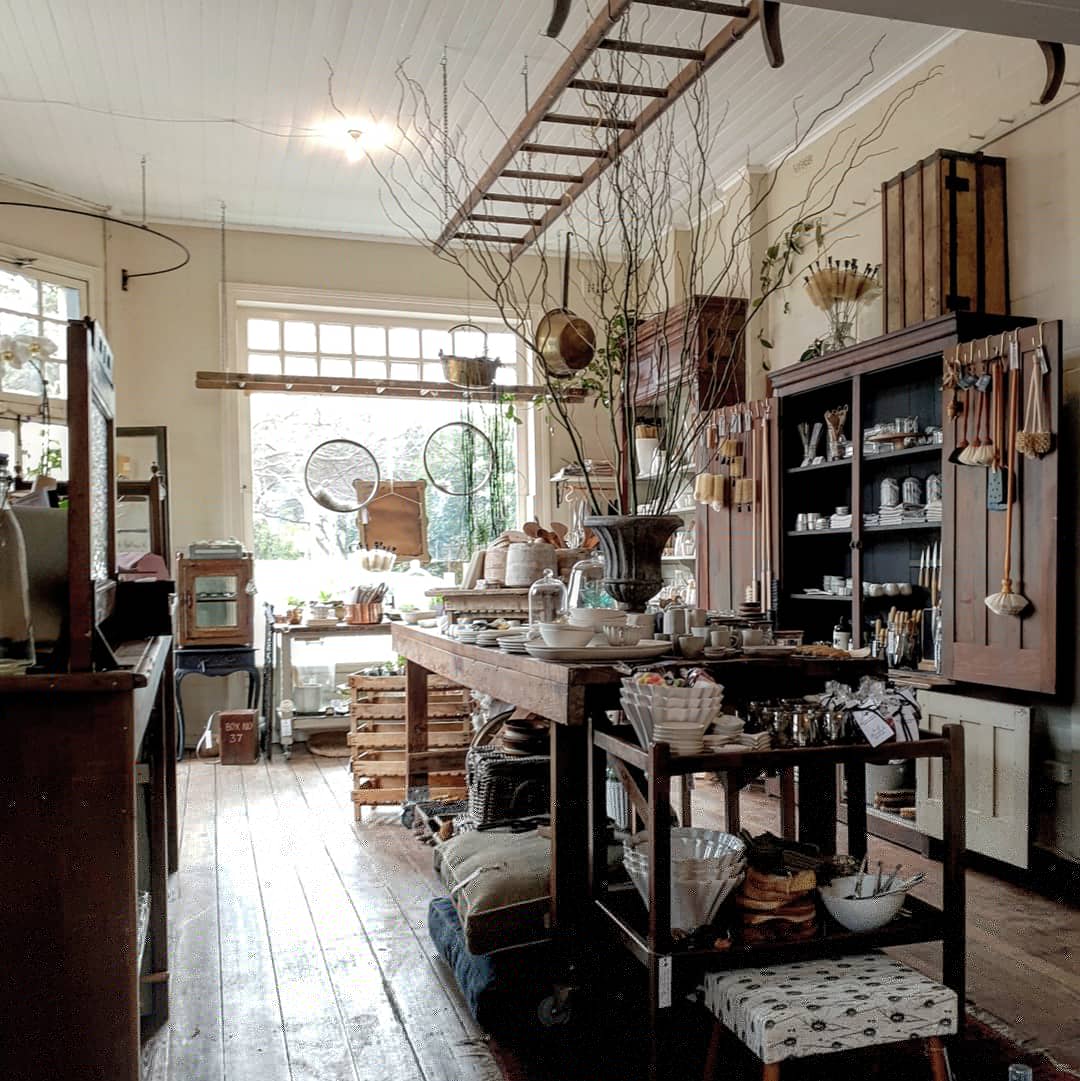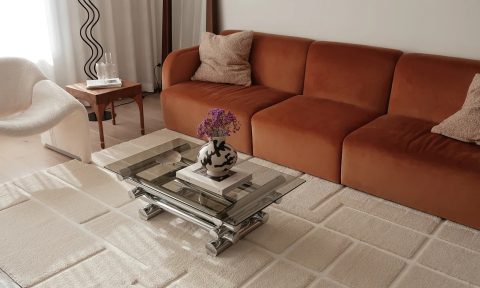By Bianca Tzatzagos
Nostalgic it may be, but it often feels like the era of legendary bricks and mortar retail is behind us. It may have even been behind us before I was born. There are tonnes of reason for this, and obviously online shopping is a fundamental one. But I can remember a handful of truly legendary Sydney shopping experiences that have stood out for me in my lifetime, and I’m not so old.

One that sticks in my mind was in 2009, the first time I entered Sibella Court’s The Society Inc in Paddington, a curious haberdasher-collector-merchant that felt old and new, exciting and authentic all at once. I recall buying tiny dried starfish as Christmas ornaments and spools of antique ribbon plucked straight out of the stylist’s own curated cabinet of curiosities. Sibella lived upstairs at the time, and yet nothing in the building felt off-limits to visitors.

About the same time (2010 or so) began Suzie Anderson’s weekend shopping events at her Bowral estate, Hopewood House, a beautiful destination of French goodies in a chateau-like setting, replete with potting shed, dining hall and magnificent gardens.

I also recall much earlier visits in the 1980s to the Strand Arcade’s “Martinvale” gift store where Mum bought me the teeniest blown-glass punch bowl for my future doll’s house. I still have it, and now also the doll’s house in which it resides.
The common thread throughout all these memorable boutiques? The shopkeepers were of singular vision, seemingly tireless and uniquely driven. Making money was never the primary objective – there was always a generosity of spirit that shone through. Even if you didn’t buy anything (and I very often didn’t), you still got something out of a visit. The sense of a legacy being created was palpable.
When I was first given the biography of Chuck Williams, the founder of Californian behemoth Williams Sonoma, it read to me like a fairy tale. I was enchanted by the story of this single individual who had lived through the Depression and travelled to Europe for the first time in 1950s, by then in his late 30s. A builder by trade and foodie by passion, he came back from his trip, bought a hardware shop in Sonoma, added a few housewares to it – and plenty of characteristic flair. “He laid a black-and-white floor, painted the walls butter yellow, and installed his own shelving, which he painted a glossy bright white.”

It didn’t take long for the shop’s hardware inventory to be overtaken by Chuck’s natural inclination for kitchen items. This included “…a set of black-and-white cups and saucers from Sweden. Another was oyster baskets made of dark willow, which Chuck had seen used for carrying and displaying shellfish in the Parisian markets.” Later in Merchant of Sonoma, Chuck explains his buying philosophy: “I have never bought anything with the idea that I think somebody else is going to like it. I buy because it appeals to me, and when others feel the same way, that’s good. Those are the kind of people I want for my customers.”
What a marvellously ballsy approach to retail. It assumes one important idea: that you know instinctively what you love and let intuition rule your decisions. It means finetuning your eye to recognise quality and investing in your own integrity at all costs. It’s risky, brazen and certainly no guarantee of business success.
Before Instagram guided everyone’s aesthetic opinions, I would look to the fervent words of local shopping doyennes and writers such as Marion von Adlerstein, Maggie Alderson and Melissa Penfold. They helped to glorify the art of retail for me and I’ve been chasing that buzz ever since.
Not that I’m a shopaholic. Not even close. I could never stomach anything but relatively careful spending within pretty practical limits. I just love to collect retail experiences, and prior to camera phones these were captured in my mind’s eye and savoured through any ephemera I could get my hands on. I have collected paper shopping bags for at least 30 years now – and the quantity belies my rather modest shopping habits. Like any collector, I am particular about which ones make the cut and, in most cases, this packaging has long outlasted the products within.
Same goes for pretty postcards, business cards and catalogues from my most revered stores, sometimes mailed to me and other times nicked from the shop’s counter. Heavenly printed ribbon and embossed gift boxes can be reason alone to elevate a store to legend status.
But back to my original point. The glory days of bricks and mortar are surely behind us now. Perhaps in my lifetime, they were already gone. There’s nothing I wouldn’t do to see Mark Foy’s in its day, or even the 1910 version of Selfridges in the UK. That was an era where department stores reigned rather than flailed.
Yet among today’s confused concept stores and online retailers, some gems are flourishing. The Lost + Found Department in a heritage corner store in Sydney’s oldest garden suburb is a glorious case in point. It’s all down to the vision and energy of another legendary shopkeeper, Silvia Noble, who has been savvy enough to use social media and online as a vehicle for pedalling more of the old-world magic that emanates from the shop. Another stellar example is Lily Pond in Geelong, Victoria. I haven’t made to that store in person and yet I’m thoroughly captivated by its portrayal on Instagram. It alone has inspired me to visit one day and follow along virtually in the meantime.

What both these current shops share is their ability to effortlessly straddle past and present, digital and physical with boundless enthusiasm and curiosity. All to bring their customers some of the world’s most wonderful things, presented in the most tantalising ways. It makes me hopeful that some delightful moments of retail nostalgia are still to come.
–—When she’s not window-shopping, Sydney-based copywriter Bianca Tzatzagos produces engaging stories for like-minded clients.









